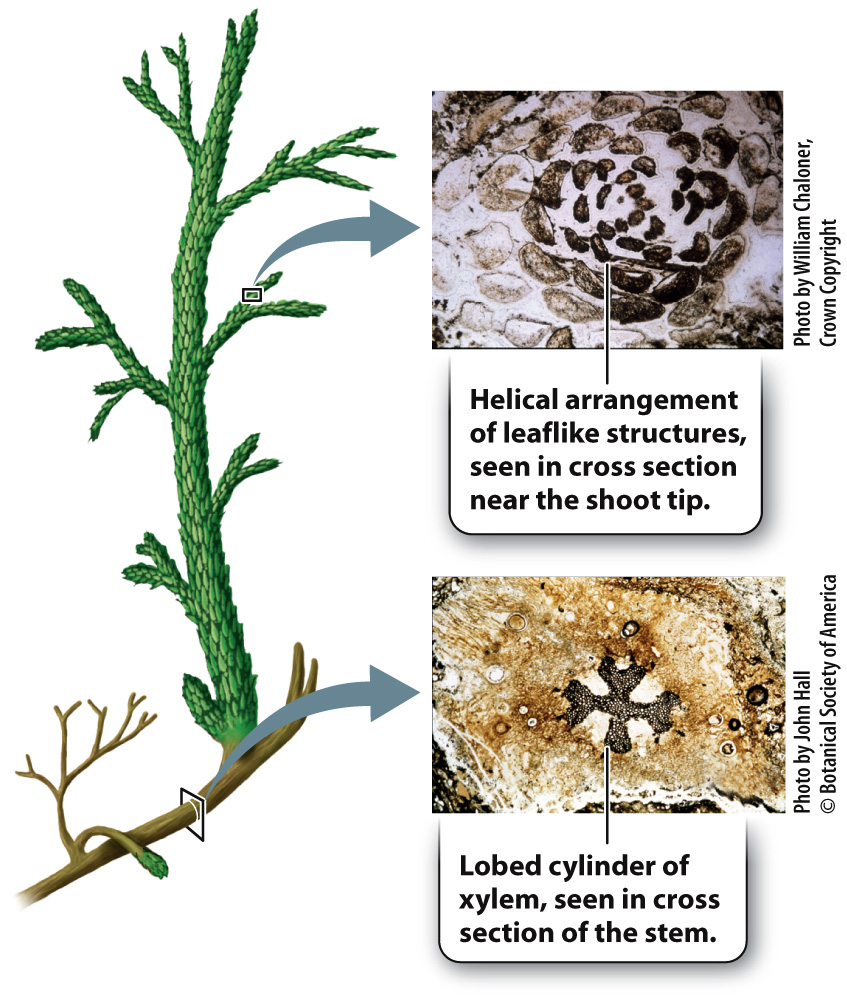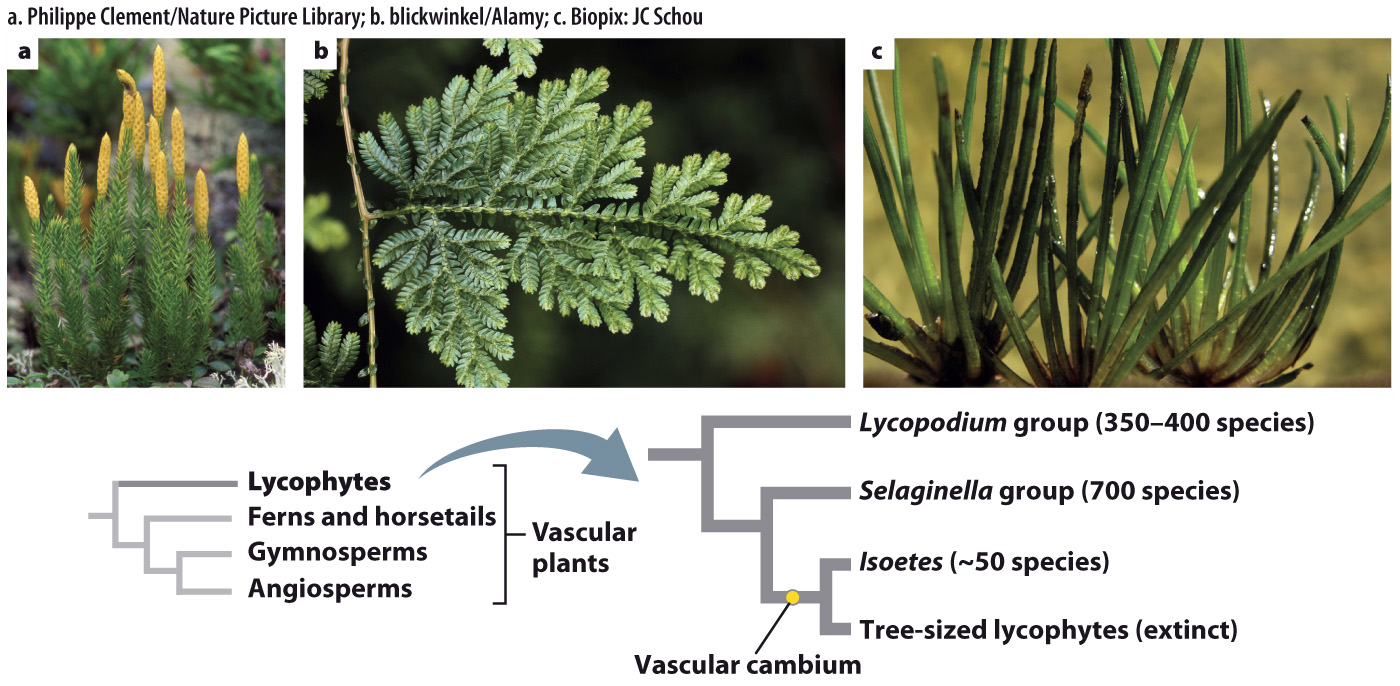Lycophytes are the sister group of all other vascular plants.
One of the fossil populations in Rhynie cherts is notably larger and more complex than the others. These fossils show leaflike structures arranged on the stem in a spiral pattern. Through the stem runs a thick-

Fossils indicate that the leaves and roots of lycophytes evolved independently from those of ferns, horsetails, and seed plants. A distinctive feature of lycophyte leaves is that they have only a single vein, in contrast to the more complex leaf venation found in other vascular plants. About 1200 species of lycophytes can be found today. Some grow low to the ground and produce branching stems covered by small leaves (Fig. 33.8a) or leaves in rows held in a single plane (Fig. 33.8b), while others grow as epiphytes in tropical forests. The most distinctive living lycophytes are the quillworts (genus Isoetes), which are small plants that live along the margins of lakes and slow moving streams (Fig. 33.8c). A few species are desiccation tolerant and can live in ponds that dry up in summer. Uniquely among living lycophytes, they have a vascular cambium. Seeing a quillwort today, you would never guess that its relatives once included enormous trees.
